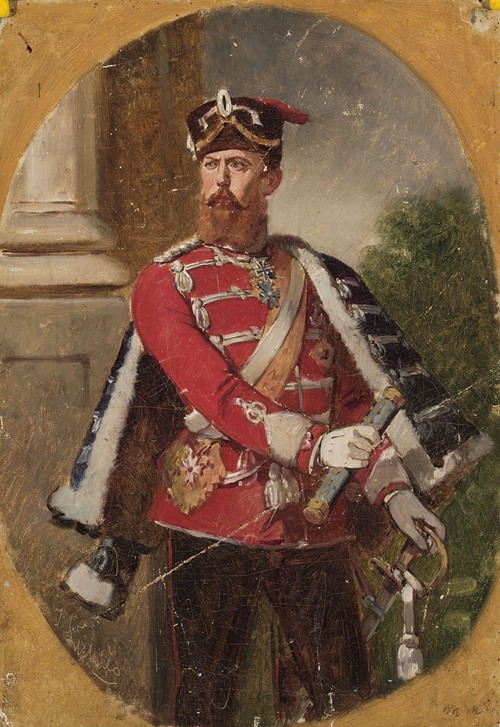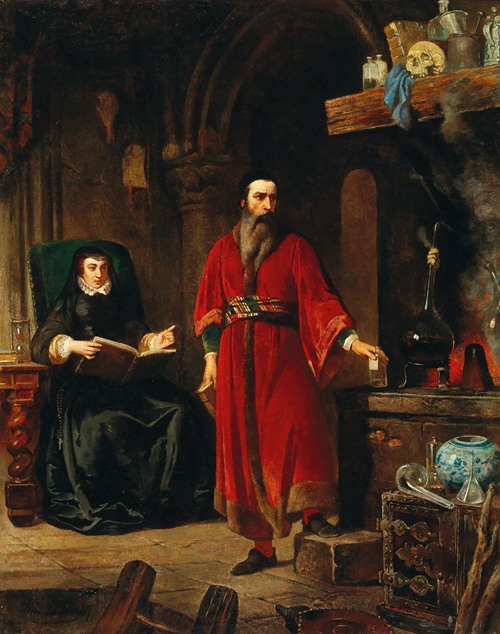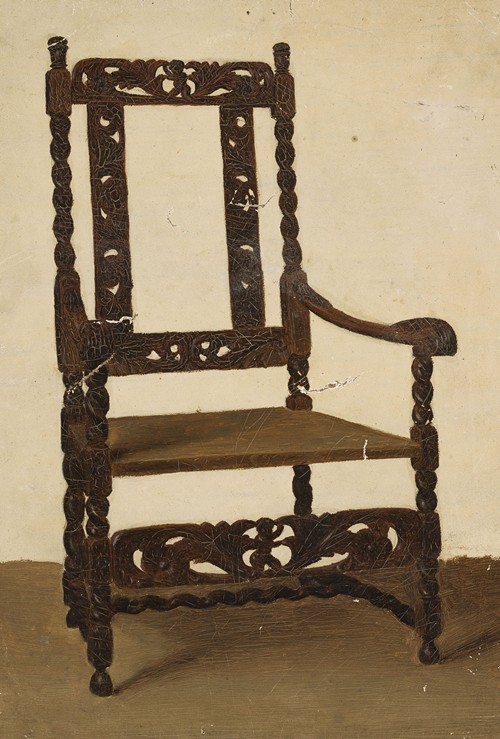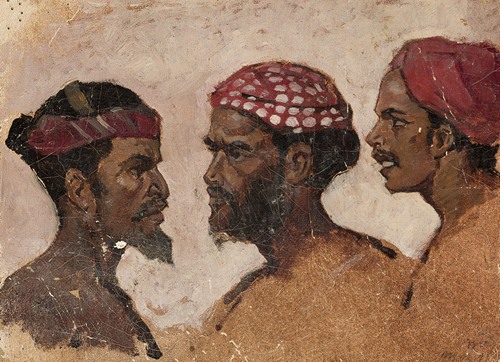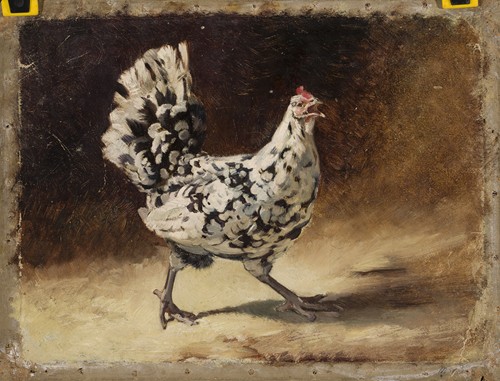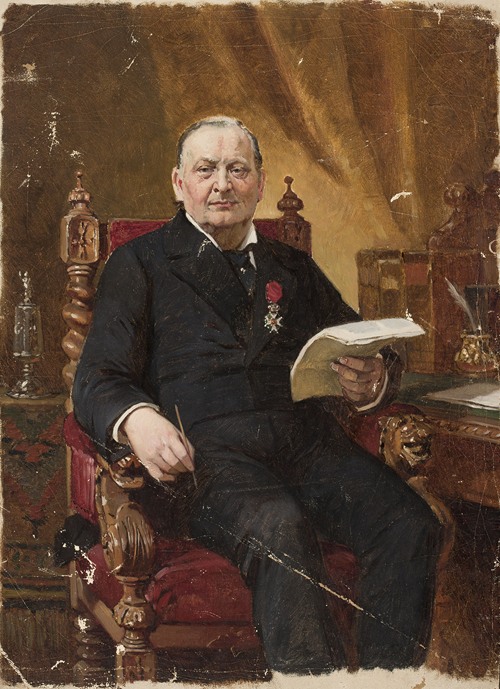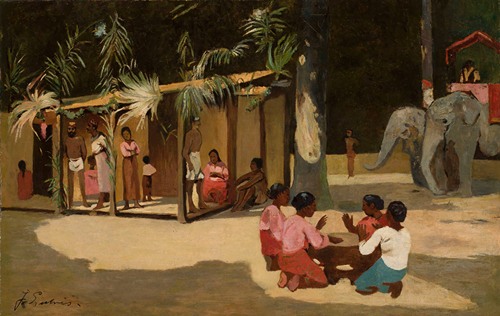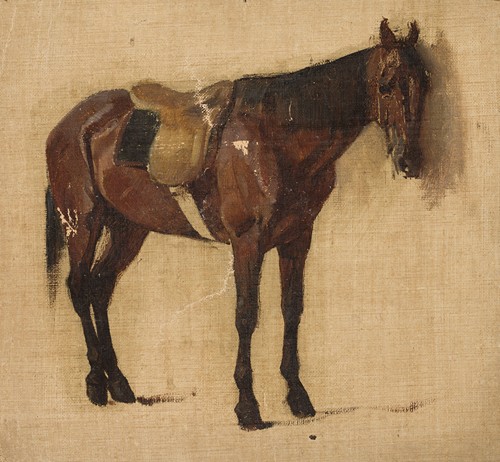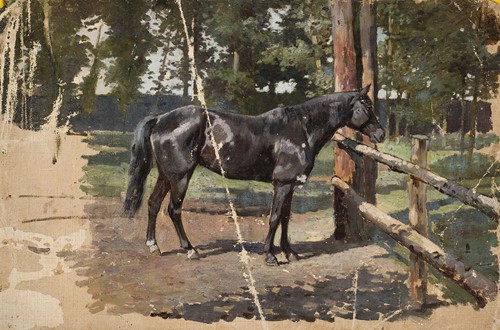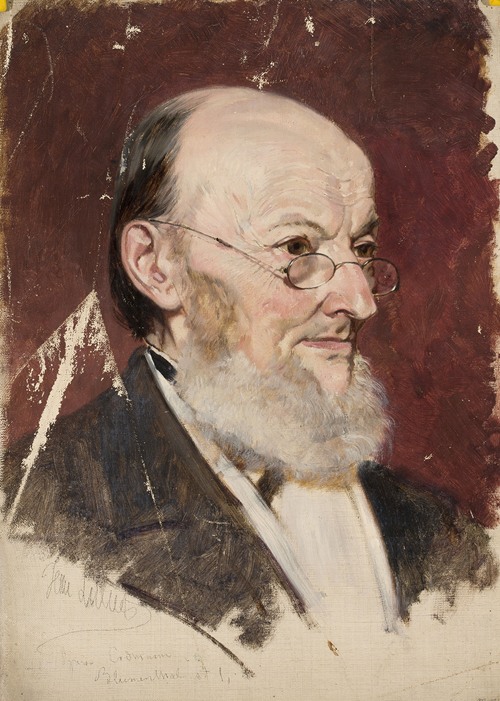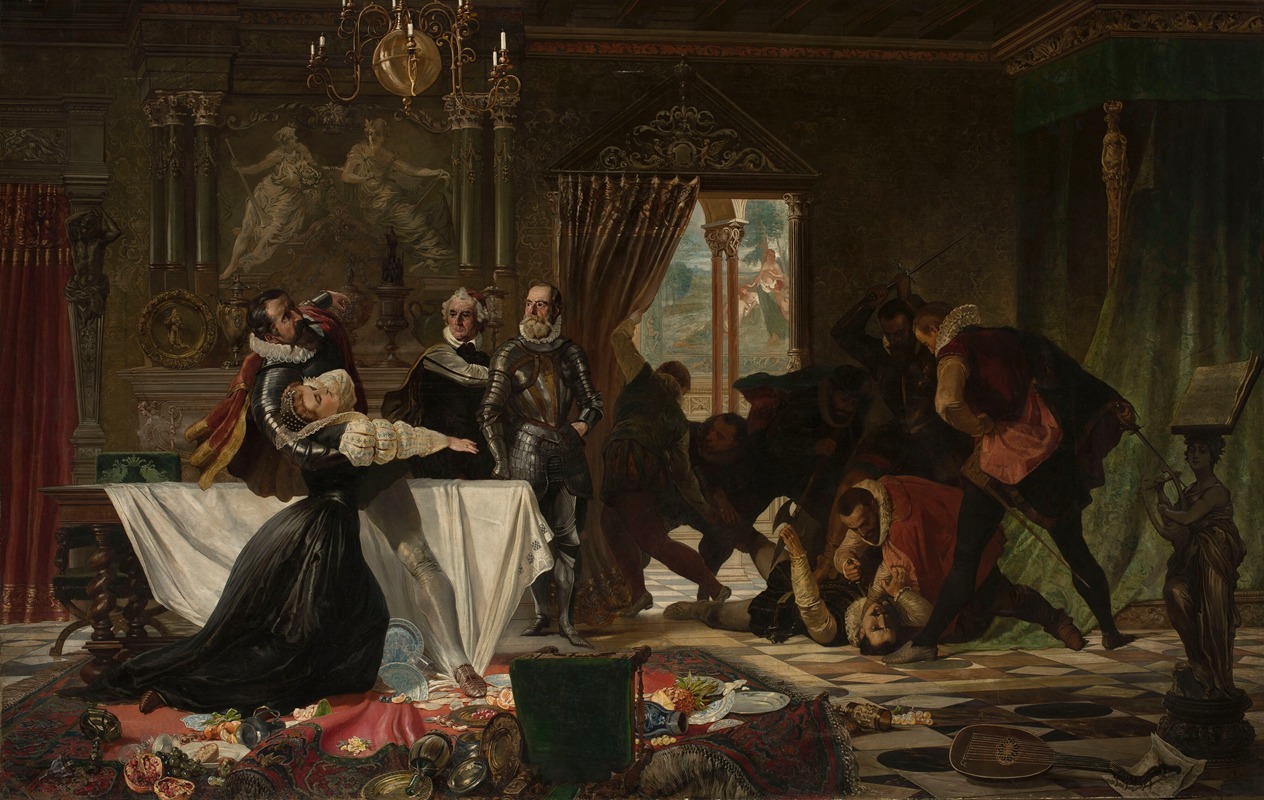
Jean Lulvès was a Franco-German painter, specializing in genre painting and decorative works for large rooms such as the Coronation Hall in the Kremlin and the now-lost headquarters of the Krause bank in Berlin. He often painted historical scenes, specializing in those from the 16th, 17th and 18th centuries .
The son of Antoine Frėdėric Lulvès (a copper-worker and -engraver from Hanover who worked in Rouen),
Lulvès initially worked as an engineer in France, Belgium and Germany before studying in Carl Steffeck's studio in Berlin from 1862 onwards. In 1863–64 he was employed by Baron Moller on Ösel Island. He next went to Moscow, where he worked on the decoration of the Alexander Nevsky Rooms in the Kremlin. He went to Rome in 1865 before returning to Berlin, where he took over producing the wax-paintings for the ballroom at the Krause Bank. From 1862 he regularly exhibited genre pictures at the academy.
His paintings included The Painter Clouet at the Louvre, The Secret Reunion, The Murder of Rizzio, The Historical Murder Site, Court Scenes, A Musical Young Man, Lioness with her young. The Marionettes (Museum Mülhausen i.E.) and Little Lever (Stadtmuseum Königsberg). He also produced the illustrations for A. Traeger's "Deutsche Kunst", the Illustrierte Zeitung (Leipzig), Lipperheide's "Illustrierte Frauenzeitung", Schorers Familienblatt, Daheim, Über Land and other works. His son Dr. Jean Lulvès (1866–1928) worked as an archivist, historian and genealogist and wrote a series of historical publications.
